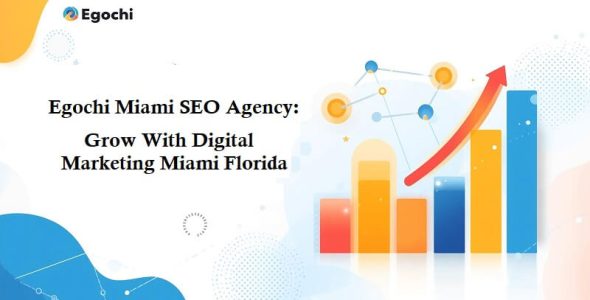Best No-Code Tools to Build Apps Without Coding
Technology is transforming the way we create digital merchandise. Just a few years ago, growing a cellular app or internet application needed enormous coding capabilities, huge teams, and large investments. Nowadays, it is a whole lot distinct. Thanks to No-Code Tools to Build Apps, it is now viable for anyone to create, install, and develop an app without once typing a single line of code.
Whether you’re an entrepreneur with a fantastic concept, a student working on a challenge, or a business user wishing to automate processes, exploring tools like free finance WordPress themes can also help you quickly build professional websites and bring your ideas into reality at pace and within budget.
Here we are able to take you through the handiest no-code solutions to create apps without coding in 2025, their abilities, blessings, and how to select the most appropriate one to your requirements.
What are the no-code tools really?
There are no-code system software platforms that allow you to create apps, websites and workflows using simple drag-and-drop interfaces, pre-maid templates and visual editors. Rather than coding complex programming scripts, you lay out the application’s capability, the usage of blocks, paperwork, and integrations.
No-code platforms are brand new because they:
- Save improvement time and fee.
- Enable non-technical users to construct apps.
- Enable faster prototyping and checking out of ideas.
- Offer scalability for expanding corporations.
Why Use No-Code Tools in 2025?
The call for no-code structures is swiftly growing in 2025. Here are a few reasons why:
- Speed to Market: Entrepreneurs can release apps in weeks rather than months.
- Cost-Effective: Hiring developers may be high-priced. No-code equipment reduces the need for big budgets.
- Accessibility: Anyone with basic laptop capabilities can create apps.
- Integration Power: New no-code platforms integrate with 1/3-birthday celebration apps which includes Google Sheets, Slack, or Stripe.
- Scalability: Most no-code structures now enable organization-level programs.
Top No-Code Apps to develop apps without coding
Let us take a look at the top no-code platforms leading the charge in 2025.
1. Bubble
Bubble is among the most popular no-code app development platforms. It enables users to develop powerful web applications without code.
Features:
- Drag-and-drop interface.
- Construct rich apps with user logins, databases, and workflows.
- Huge plugin store.
- Mobile and web responsible design.
Best for: Business and entrepreneurs who want to create a scalable web app like Marketplace, Saas Prasad, or Internal Dashboard.
2. Adalo
Adalo is mobile app development centric. It’s a go-to for building apps that can be directly published to iOS and Android app stores.
Features:
- Pre-built app elements.
- Push messages.
- Simple database management.
- Direct publishing to Apple App Store and Google Play Store.
Best For: Startups and those who wish to deploy mobile-first apps rapidly.
3. Glide
The glide lets you convert the spreadsheet (eg Google Sheet or Excel) into a complete, full-functioning app.
Features:
- Clean, simple drag-end-drop builder.
- Ideally suited for spreadsheets.
- Built-in business tool templates.
- No design experience required.
Best For: Small businesses and students developing internal tools, event apps, or CRM systems.
4. Airtable
Airtable is a pass between a spreadsheet and a database. Though now not simplest for apps, it’s typically used to build no-code workflows and app-like interfaces.
Features:
- Robust database functionality.
- Zapier, Slack, and different tool integrations.
- Custom perspectives consisting of Kanban forums, calendars, and forms.
- Automatable.
Best For: Teams requiring strong database-backed programs and challenge management software programs.
5. Thunkable
Thunkable is an easy-to-use no-code development platform for mobile apps.
Features:
- Drag-and-drop layout blocks.
- Easily connect APIs.
- Export apps to iOS and Android.
- Anchors animations and media.
Best For: Students, teachers, and startups building prototype mobile apps.
6. Webflow
Webflow is a robust website and web app construction tool that provides full control of the design without writing code.
Features:
- Professional-level visual editor with customization.
- Integrated CMS (Content Management System).
- SEO-friendly framework.
- Included hosting.
Best For: Designers, marketers, and companies needing professional websites and landing pages.
7. OutSystems
OutSystems is enterprise-level no-code/low-code for developing highly scalable applications.
Features:
- AI-driven development recommendations.
- Robust security and compliance capabilities.
- Scales to large organizations.
- Supports web, mobile and enterprise apps.
Best for: Large enterprises and large organizations demand scalable, safe apps.
8. Zoho Creator
Zoho Creator is an adaptable no-code app builder that’s part of the Zoho platform.
Features:
- Create business workflow apps custom-tailored.
- Incorporation with Zoho apps and third-party sites.
- Cloud-based and mobile-competent.
- HR, pre-made templates for finance and sales.
Best for: Companies who already have ZOHO products or need workflow automation.
9. Appy Pie
Appy Pie is perhaps the easiest no-code app development tool.
Features:
- Drag-and-drop interface.
- Publish apps across multiple platforms.
- Pre-made modules such as chatbots, ecommerce and booking.
- Cheap pricing.
Best for: Small companies and entrepreneurs who require sharp and cost -effective solutions.
10. Parabola
Parabola emphasizes workflow automation and complex data processes without coding.
Features:
- Drag-and-drop data processing.
- Integrates with APIs, databases, and spreadsheets.
- Repetitive tasks automated.
- Excellent for eCommerce and SaaS companies.
Best For: Teams who require handling heavy data streams without coding.
How to Select the Correct No-Code Tool
With all these no-code platforms, the decision is based on your objectives. Think about:
- Purpose of App: Mobile, web, or internal app?
- Budget: There are free plans, yet advanced features have a price tag.
- Scalability: Will your app scale with your commercial enterprise?
- Ease of Use: Non-technical customers choose newbie-pleasant systems.
- Integration Needs: Does it combine with gear you are already used to?
Advantages of Using No-Code Tools
- Quicker Development: Release in weeks, no longer months.
- Cost Efficiency: You do not want a full improvement group.
- Flexibility: Quickly update and modify apps.
- Innovation: Rapidly attempt new ideas.
- Accessibility: Anyone can construct apps, no longer simply developers.
Drawbacks of No-Code Tools
Although strong, no-code tools do have some limitations:
- Less agility than custom coding.
- Can have performance problems with extremely large apps.
- Vendor lock-in with some platforms.
- Advanced customization can need low-code assistance.
The future of no-code development in 2025
By 2025, no-code development is ready to be the main method of working. Business, startups and even governments are adopting it to speed up their digital changes. AI is being integrated into no-code equipment, making app development even extra sensible and automated.
In the destiny years, we are able to anticipate:
- AI-powered app builders.
- Deeper interoperability with current technologies which includes IoT.
- Broader adoption throughout industries from schooling to healthcare.
Conclusion
Developing apps is no longer the domain of expert coding. The top no-code solutions in 2025 permit individuals, startups, and agencies to show ideas into reality with velocity and ease.
Whether you want to create a cellular app using Adalo, a web app using bubble, or a workflow app using Airtable, is a platform for you. The future of APP development is becoming more accessible, inexpensive and faster, and the no-code platforms are leading this change.
FAQ
Q1. Are no-code apps scalable for organizations?
Several no-code structures together with Bubble and OutSystems are scalable to accommodate startups and big corporations.
Q2. What is the satisfactory no-code tool for novices?
Glide and Appy Pie are the best platforms for freshmen to get started.
Q3. Do no-code platforms charge cash?
All have unfastened variations, but greater state-of-the-art functions and app publishing on app stores generally call for paid subscriptions.
Q4. Can no-code apps be included with other software?
Yes. Numerous no-code answers combine with 1/3-party apps together with Stripe, Zapier, and Slack.

 My Account
My Account 

